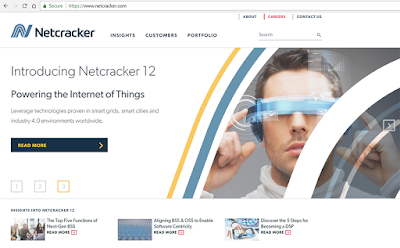Preamble
After years of rather stagnant market positions and look-a-like services, suddenly a lot is happening in the U.S. mobile market. In the first three articles of this series, we looked at the move to unlimited mobile data plans, the new regulatory climate in Washington, the Broadcast Incentive Auction, and the coming unlicensed spectrum technologies.
The FirstNet project is huge
Following the terrorist attacks of September 11, 2001 there were calls to improve the communications of emergency response teams; sixteen years later and the U.S. is still working to put in place a national network capable of providing voice, video and broadband data communications to first responders. Until now, there has been a patchwork of incompatible radio systems, but finally it looks like the FirstNet project is ready to move ahead, providing a significant improvement for emergency personnel and potentially providing a long-term pillar of support for one of the four major U.S. mobile operators. FirstNet has publicised a very big number to reflect the size of its program: $46.5 billion.
Background
In 2012, the First Responder Network Authority (FirstNet) was created and funded by Congress an independent authority within the National Telecommunications and Information Administration (NTIA). FirstNet set up its headquarters in Reston, Virginia along with a technical lab in Boulder, Colorado. The organisation is headed by a 15-member board and led by Michael Poth (CEO) and TJ Kennedy (president), both of whom have backgrounds in law enforcement. The FirstNet technical team is headed by Jeff Bratcher, CTO, who previously served at the NTIA and was at Motorola Cellular and Siemens Mobile during the earlier part of his career. FirstNet funding was raised from previous FCC spectrum auctions.
FirstNet will build a new Band Class 14 (700 MHz) network designed to be reliable, functional, safe and secure, and provide optimal levels of operational capability at all times. The infrastructure plan is divided in distinct layers: core network, transport backhaul, RAN and public safety devices.
AT&T wins the bid
On March 30th, FirstNet announced its selection of AT&T as its strategic partner. The record-breaking public-private partnership for communications infrastructure is formalised in a 25-year agreement covering all 50 states, the District of Columbia, tribal lands and 5 U.S. territories. The broad terms of the agreement were listed as follows:
FirstNet to provide 20 MHz of high-value, telecommunications spectrum and success-based payments of $6.5 billion over the next five years to support the network buildout.
AT&T to spend about $40 billion over the life of the contract to build, deploy, operate and maintain the network, with a focus on ensuring robust coverage for public safety.
Additionally, AT&T will connect FirstNet users to the company’s telecommunications network assets.
The procurement process began with a network RFP issued by FirstNet in January 2016. AT&T said it was selected on a 'best value award' that considered financial sustainability and was based on more than just a technically acceptable solution at the lowest cost.
In describing the project, AT&T said it will provide a nationwide seamless, IP-based, high-speed mobile network supporting prioritised communications. The system will also leverage existing infrastructure. 5G capabilities will be added in the future. Another outcome of the project is that it will also make 20 MHz of prime broadband spectrum available for private-sector development. AT&T has assembled a team that includes Motorola Solutions, General Dynamics, Sapient Consulting and Inmarsat Government. FirstNet will be a huge step forward over the current emergency response systems, many of which have not been updated in over a decade and lack the video chat capabilities available on any smartphone.
Network slicing
For AT&T, the project will be a very powerful overlay to its own mobile infrastructure. In a sense, FirstNet will be a high-profile, high-margin MVNO on the AT&T infrastructure giving it a point of differentiation over its competitors. Due to its nature and budget, it is likely that many network elements are owned by and solely dedicated to FirstNet. This level of technical detail is not published in press announcement but might be accessible via the RFP documentation that should be part of the public record.
Meanwhile, AT&T and its competitors are building overlay networks on their mobile infrastructure for other applications and users, such as connected cars. For instance, AT&T provides in-vehicle connectivity for Tesla, supporting remote diagnostics, over-the-air updates, live traffic, Internet entertainment and other telematics. Entering the era of autonomous cars, the mobile infrastructure will have to keep up with latency and data volume requirements. Virtual network slices will become more numerous and more granular.
As the agreement outlines, FirstNet traffic will be flowing between its network domain and resources on the larger AT&T network, such as third-party, connected vehicles with cameras already at the scene of an accident. The expertise that AT&T gains by building the FirstNet project should be highly applicable to other commercial customers.
Concluding thoughts
With all these forces coming into play, 2017 is shaping up to be one of the big transformative years in communications, at least for the U.S. mobile market. Looking back at 2008, one can clearly see how the iPhone changed the course of all the major vendors. Now, instead of a single event, multiple changes are all happening at once; the regulatory climate will be a bigger factor than we have been used to during the Obama years; and if the AT&T Time Warner deal goes through, there will be heightened pressure on the other three players to keep up.
















